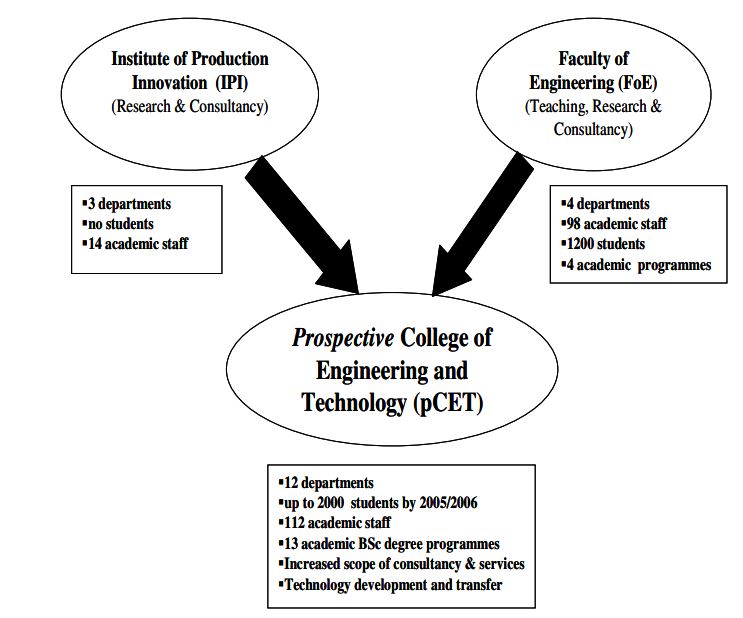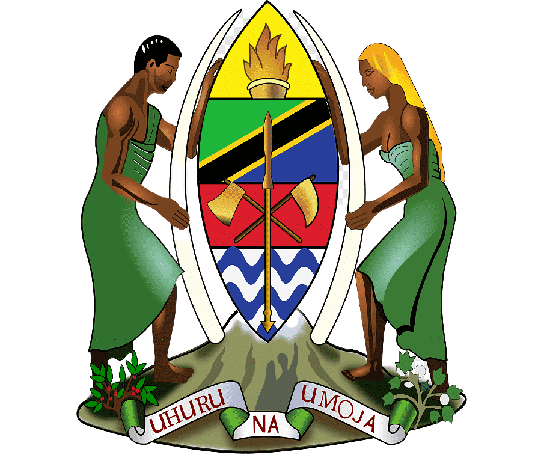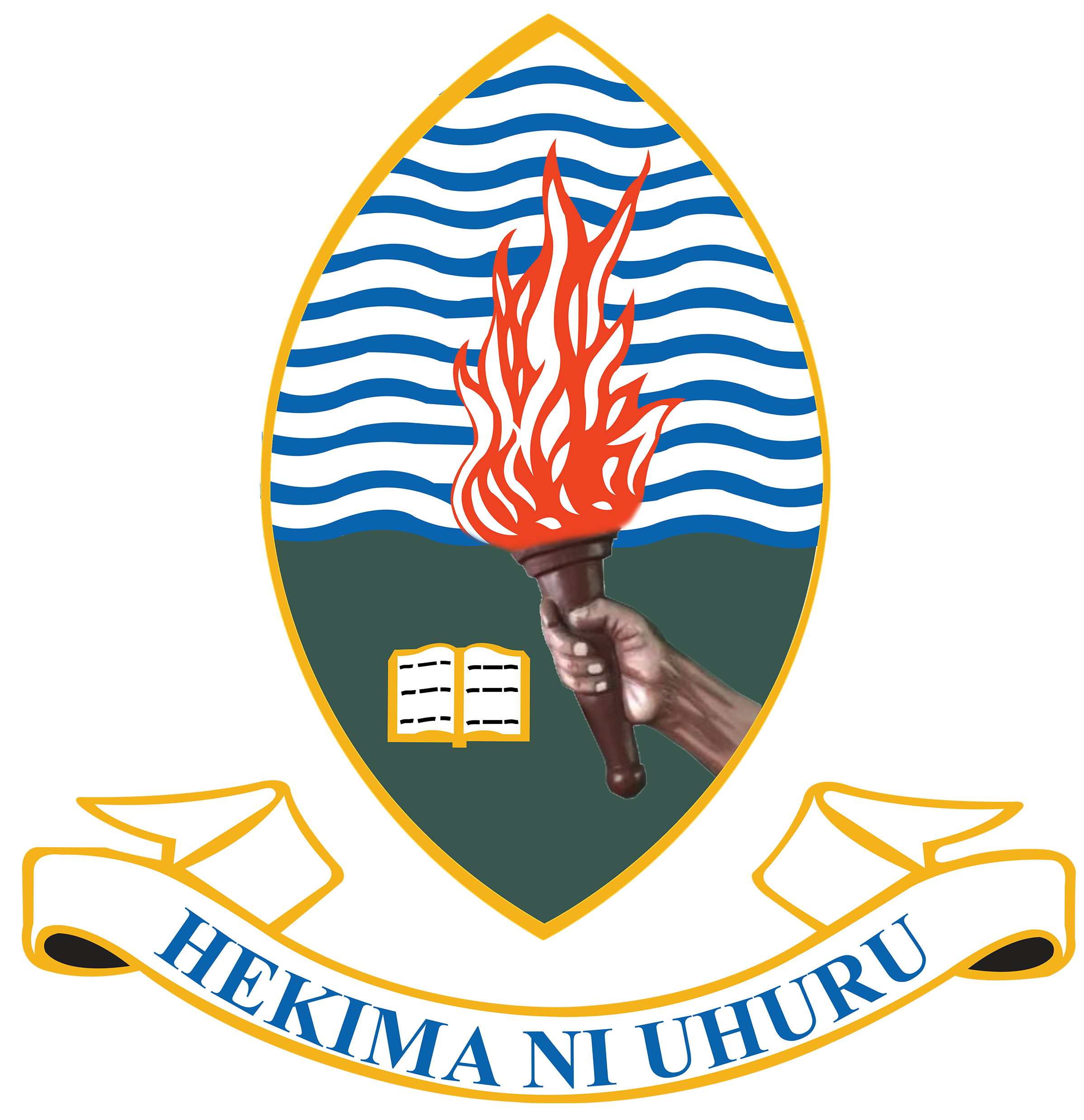Historical Background
The College of Engineering and Technology (CoET) originated from the then Faculty of Engineering (FoE), which was established at the University of Dar es Salaam (UDSM) in 1973 with the support of the Government of the Federal Republic of German through the then technical cooperation agency Deutsche Gesellschaft fuer Technische Zusammenarbeit (GTZ) following a cooperation agreement between the governments of the United Republic of Tanzania and Federal Republic of Germany in 1971. FoE was established to fulfill the following three objectives: (i) to provide education and advanced training for engineers; (2) to perform research in the interest of exploitation of natural resources; and (iii) to provide expert professional services to industry, government, private organizations and the general public.
Initially there existed only three academic Departments namely Civil, Electrical and Mechanical Engineering until 1978/79 when the fourth Department of Chemical and Process Engineering was established with the assistance from the Norwegian and Swiss governments.
In order to maintain strong relations with the industry, the Office for Relations with the Industry (ORI) was established followed by the Committee for Relations with Industry (CORI). For further enhancement of the link between FoE and the Tanzanian Industry and thereby assist the FoE in transferring its products and services to industry, the Institute for Production Innovation (IPI) was established in 1984.
IPI was established to cultivate and enhance innovation; and to develop and transfer technologies. It was a Centre for transforming results of research done at FoE to useful products, processes and services for society. The main focus of IPI was development of appropriate technologies applicable in rural areas in the fields like agricultural mechanization, agro-processing, small scale mining, low cost housing and sustainable energy systems.
The review of FoE-IPI relation which took place in 1988/89 resulted in establishment of the Bureau for Industrial Cooperation (BICO) in 1990. Three specific objectives of BICO are (i) to provide consultancy services to the industries and other organizations; (ii) to provide other expert professional services to the industries and other organizations; and (iii) to deliver continuing professional development (PDP) courses to practicing engineers in the industries and other organizations.
Following an extensive review carried out in 1989/90, FoE went through the Institutional Transformation Programme (ITP) in 1990-92 and Effective Localization Programme in 1992-96. The two main objectives of these reforms were: (i) to achieve improved institutional efficiency and effectiveness; and (ii) to achieve enhanced staff motivation and retention. Subsequent to these reforms, the scope of activities in FoE increased beyond undergraduate education and training to include more postgraduate training, research and professional services to industry. The developments which were taking place at FoE were later adopted at University level resulting into the well documented University of Dar es Salaam Institutional Transformation Programme.
The desire to optimally utilize the IPI and FoE resources and realize fully the objectives of two entities, the motive to integrate them to form the College of Engineering and Technology (CoET) began in the mid 1990s. Furthermore, the idea to merge was in conformity with the University of Dar es Salaam Institutional Transformation Programme (ITP), which calls for the clustering of the units with common objectives and mission.
The formal establishment of CoET could however not take effect since the University Act of 1970 did not provide the creation of campus colleges. However, while preparations were in progress for the enactment of the Universities Act that would have provisions for the campus colleges, the UDSM Council approved the establishment of the Coordinating Office for Engineering and Technology (COET) to coordinate merging of the two units into a fully fledged College i.e. CoET. COET was allowed to operate temporarily under the name Prospective College of Engineering and Technology (pCET). pCET consisted of three faculties namely Civil Engineering and the Built Environment (CEBE), Electrical and Computer Systems Engineering (ECSE) and Mechanical and Chemical Engineering (MECHE); and two units i.e. BICO and TDTC. COET was responsible for ensuring synergic interaction between the three faculties, BICO and TDTC.
The structure of pCET was designed so as to ensure synergic interaction between the three faculties, BICO and TDTC. The pillars of pCET were as shown in Figure 1.1.

Figure 1.1: The Integration of FoE and IPI and Subsequent Transformation to pCET
While BICO continued to perform similar functions for which it was established, TDTC was introduced with the role of coordinating all matters and activities related to technology development and transfer at the College.
The College of Engineering and Technology (CoET) was formally established as the 1st fully fledged Campus College of the University of Dar es Salaam by the Council Meeting of 29th September 2005 following the passage of the Universities’ Act No. 7 of 2005 in April 2005, which became effective on 1st July 2005 and published via Government Notice No.260 published on 2nd September 2005. CoET was inaugurated by His Excellency Dr. Jakaya Mrisho Kikwete, the then President of United Republic of Tanzania, on 13th April 2006.
During CoET transformation, it went through college-faculties-department structure (with 13 departments) which has recently changed to college-department structure with the number of departments reduced to six which include the departments of Chemical and Mining Engineering (CME); Mechanical and Industrial Engineering (MIE); Electrical Engineering (EE); Structural and Construction Engineering (SCE); Transportation and Geotechnical Engineering (TGE); and Water Resources Engineering (WRE). Besides, there are other three (3) units i.e. the TDTC; BICO; and Department of Training Workshops (TW). TW Department provides professional training which cuts across all first year CoET students.
The number of undergraduate academic programmes rose from one (with four specializations) during early years of FoE to about 12 during CoET to address the need of more specialized programmes. However, CoET later moved to lesser number of programmes so as to compromise between the need for specialized engineers and broadness of knowledge required at undergraduate level. As postgraduate programs are expanding, the intention is to let more specialization at postgraduate level and leaving a room for broader knowledge at undergraduate level.
When FoE started nearly all teaching staffs were expatriates. Few expatriates existed till mid nineties when the number of local staff was constantly rising. In the year 2017/18 CoET had more than 200 indigenous academic staff with about 50% holding PhDs. Also the undergraduate intake was only sixty (60) during its establishment but it has gone up to maximum of about 700 now with percentage of female students growing from 0 to 18% in
2017/18.

